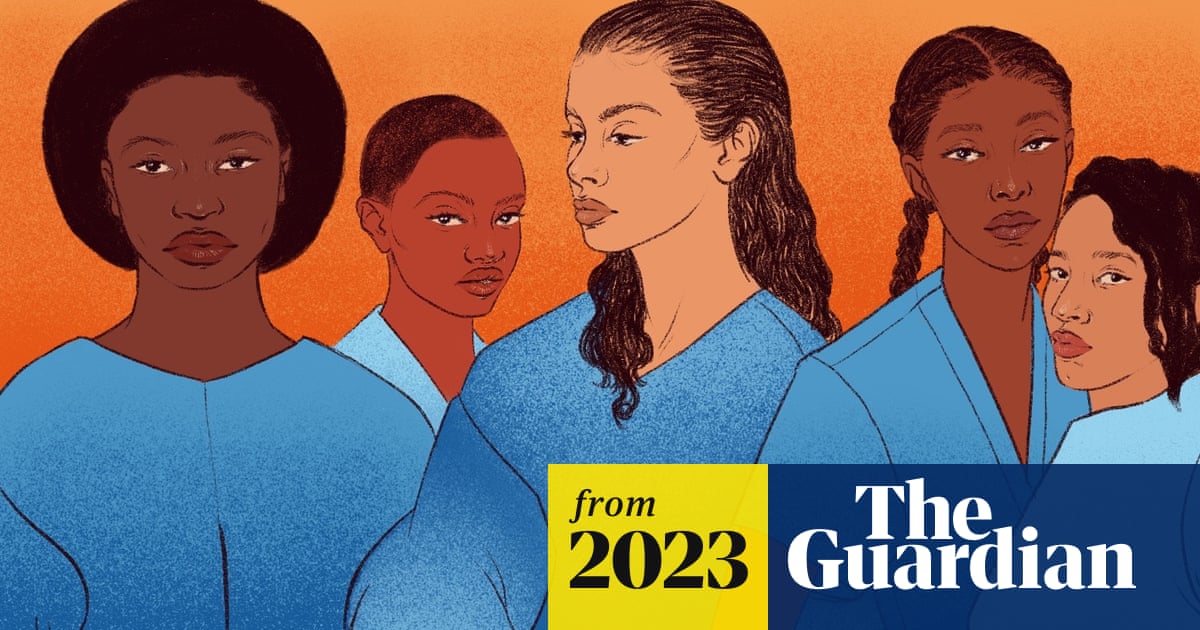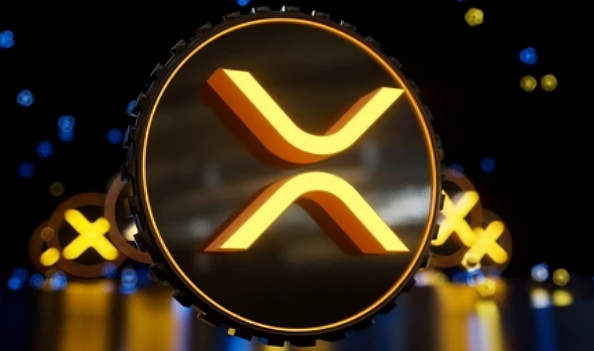
IVF has helped hundreds of thousands get pregnant. But Black women in the US, saddled with the myth of hyper-fertility and biased reproductive care, often lack the assistance they need
In 1991, a Kansas state legislator proposed paying women on welfare to get Norplant, a contraceptive that when inserted in the upper arm would prevent pregnancy for five years. His proposal followed a 1990 Philadelphia Inquirer editorial that linked two news events – the federal government’s approval of Norplant and a report that showed half the country’s Black children were living in poverty.
The editorial suggested women on welfare – presumed to be Black – should receive Norplant for free: “Dare we mention them in the same breath? To do so might be considered deplorably insensitive, perhaps raising the specter of eugenics. But it would be worse to avoid drawing the logical conclusion that foolproof contraception could be invaluable in breaking the cycle of inner-city poverty.”
The desire to control Black women’s fertility can be traced back to chattel slavery and was borne from a bevy of racist ideas – the most pervasive being that Black women can reproduce easily. It’s a belief that’s still commonly held today, and in addition to serving as the basis for reproductive discrimination, the trope has furthered the idea that infertility is only an issue for white people.
“The stereotypes of Black women’s reproduction all lean towards hyper-fertility – the welfare queens, not knowing when to stop having babies, not being able to afford their babies,” said Rosario Ceballo, the dean of Georgetown University College of Arts and Sciences and a co-author of the research paper Silent and Infertile. “For a long time our social narratives about infertility centered on white, upper socioeconomic-class couples. And it was very focused on high-tech, highly-expensive medical interventions like IVF [in vitro fertilization]. There’s a real dichotomy between perceptions of women of color who just have too many babies, and white women whose ability to have babies we need to assist and support.”
The reality, though, is that while more than 13% of American women aged 15 to 49 have impaired fecundity, Black women are almost twice as likely as white women to suffer from infertility. (The most recent infertility data from the Centers for Disease Control was published in 2013.) They are also half as likely as white women to seek help for infertility; one review of 80,390 assisted reproductive technology (ART) cycles (defined as any fertility treatments in which either eggs or embryos are handled) showed that white women were involved in 85.4% of them, whereas only 4.6% involved Black women.
I interviewed several Black women who believed they would be able to have children whenever they decided it was time, mainly because they saw relatives getting pregnant with ease, but also because those prevalent social narratives permeated their households as well; the only information they often got about sex from their parents was the admonition not to get pregnant.
Reniqua Allen-Lamphere, a 42-year-old journalist in New Jersey, started trying to get pregnant at 38, as soon as she and her husband returned from their honeymoon. Four months later, they decided to see a fertility specialist, who suggested they try timed intercourse, then two rounds of intrauterine insemination (IUI), in which sperm is placed directly into the uterus, and finally four rounds of IVF, in which embryos are placed directly into the uterus.
“It was horrible. Devastating. It’s really lonely,” Allen-Lamphere said of the IVF process, during which she had to have daily injections to stimulate her ovaries to produce multiple eggs, and then undergo the surgical procedure to retrieve them. “You feel like your body is not doing the thing it was created to do. I grew up with people telling me that Black women get pregnant just looking at a penis. So why is this not happening for me?”
American women overall are waiting later to become pregnant, which can contribute to infertility and necessitate the use of ART. But Black women in particular, contending with discriminatory reproductive care and saddled with the trope of hyper-fertility, face a more difficult issue: they need ART and other medical interventions at a much higher rate than they’re receiving them.
Black women’s fertility has historically been a very public, closely regulated matter. Enslaved women were raped and “bred” like livestock, expected to have as many children as possible to boost the labor force for plantation owners. But from emancipation on, after Black women’s bodies were no longer seen as vessels to supply free labor, the focus shifted to finding ways to dampen their assumed hyper-fertility, to prevent them from having too many children that would be a drain on society.
Starting in the early 1900s, 32 states passed eugenics laws that allowed the government to sterilize people with disabilities, people of color and others based on the belief that the human race could be improved by selective breeding, and by preventing “undesirable” people from having children. Eugenicists believed that white middle- and upper-class Americans should have large families, but that Black and other “unfit” people shouldn’t, in part to ensure that wealthy, white Protestants would not eventually be outnumbered.
Black, Indigenous and Latina women were forcibly sterilized in government-funded programs – a practice that continued well into the 1970s in states like North Carolina and Alabama. The women were often given the false impression that the procedures were reversible. And those on welfare were sometimes told their benefits would be withheld if they did not go through with the sterilization. According to a report from the National Women’s Law Center, 31 states and the District of Columbia still have laws that allow people with disabilities to be forcibly sterilized.
The government and organizations such as Planned Parenthood also encouraged the use of the pill and other contraceptives in Black communities – a positive in that it gave women more reproductive autonomy, but the practice sometimes had racist undertones, even when endorsed by Black leaders. In a 1932 article, Black Folk and Birth Control, WEB Du Bois advocated for increased use of contraceptives among Black people, writing: “The mass of ignorant Negroes still breed carelessly and disastrously, so that the increase among Negroes, even more than the increase among whites, is from that part of the population least intelligent and fit, and least able to rear their children properly.”
Some contraceptives were given to Black women despite concerns about side effects. Though Depo-Provera, an injectable contraceptive, had been found to cause cancer in laboratory animals, from 1967 to 1978 it was tested on women at a clinic in Atlanta, about half of whom were low-income and Black. The women were not told about the risks, and in many cases the experiments were done without their informed consent.
Ceballo found that several of the 50 Black women she interviewed for her paper were resistant to using ART, in part due to the mistreatment that Black women have historically faced from the medical establishment. “There is what I call a healthy skepticism of medical institutions among the Black community, given some of the past injustices that have occurred,” said Ceballo. “Some women felt, ‘[these doctors] are not going to understand my situation. I’m not sure they’re going to want to help me.’ Some of the women were very religious and felt that they were going to place this in God’s hands.”
The narrative has shifted slightly as several high-profile Black women have spoken publicly about their own journeys with ART. Michelle Obama wrote in her memoir, Becoming, that both Sasha and Malia were conceived using IVF. In her autobiography, Thicker Than Water, Kerry Washington revealed that she was conceived using a sperm donor in 1976 – something her parents didn’t tell her until 2018.
“When Michelle Obama came out with her journey of fertility treatment and miscarriages, she opened the door to a conversation that was rarely discussed amongst Black women,” said Dr Temeka Zore, a reproductive endocrinologist and OB-GYN at Spring Fertility, a clinic with offices in San Francisco, New York and Portland. Though Zore cautioned that fertility care is still underused for women of color, “from a clinical perspective”, she said, “I do think more Black women are becoming aware of their options for fertility treatment.”
Even if there is a growing awareness among Black women about the possibility of ART, they often don’t know when to seek help for infertility, or that they should even seek help in the first place. Black women are more likely to have medical conditions such as diabetes and endometriosis that might impact their ability to get pregnant or carry a baby to term, but doctors sometimes do not advise them of the possible barriers to conception. They also develop fibroids at a rate three times higher than white women. These benign uterine tumors are typically larger in Black women, and can cause miscarriages and infertility.
Lauren Teverbaugh, a 41-year-old pediatrician and psychiatrist based in New Orleans, did not know she had fibroids until she was 31, when a new gynecologist told her as part of a routine exam. Still, Teverbaugh said, the doctor didn’t indicate the fibroids could be a reason for concern. It was relatively easy for Teverbaugh and her partner to get pregnant, just three months after they started trying, and a month after Teverbaugh started using an ovulation predictor kit. But when she went to the obstetrician for her first appointment, about five weeks later, there was no heartbeat.
Teverbaugh’s doctor told her to wait a couple of months before trying again, but did not suggest that given Teverbaugh’s age – she was 37 at the time – they should see a fertility specialist. Some experts say that couples should see a fertility specialist if they have not conceived after having unprotected sex for 12 months if the woman is under 35, and six months if the woman is over 35. But Teverbaugh and her partner tried to conceive naturally from December 2020 until September 2021. “Some part of me just thought that if we keep trying, it’ll work,” said Teverbaugh. “In hindsight, I really wish that I had been referred to the reproductive endocrinologist earlier.”
She finally met with a specialist in September 2021. It took a while to complete all the testing and bloodwork, and during the process she discovered she was pregnant again. When she went for another test, Teverbaugh discovered the pregnancy was not viable. She had her second miscarriage almost a year to the day after she’d had her first.
In February 2022, Teverbaugh tried IUI and became pregnant. At five weeks, she was able to hear the baby’s heartbeat. It was reaching that milestone that made her third miscarriage so devastating.
Teverbaugh and her partner are now trying IVF. In September 2022, after undergoing uterine testing, she found that she had a fibroid pressing down on the top of her uterus. She also discovered she had chronic endometritis, which causes infectious inflammation of the innermost uterine layer. She had surgery this past June to remove 16 fibroids and is waiting to do an embryo transfer. To date, even with insurance covering some of the costs, Teverbaugh estimates that they have spent $60,000 on infertility treatment.
The first child to be born through IVF, in 1978, was Louise Brown, a blonde, blue-eyed baby belonging to a white, heterosexual married couple. Brown’s birth drew worldwide media attention, and essentially came to symbolize who ART was made for.
The idea that infertility only affects white, upper-class couples has helped create a significant financial barrier to ART, and the price of treatments is often a deterrent. “Access and affordability of care are two of the biggest factors impacting Black women,” said Zore. “Studies have shown Black women are less likely to have medical insurance and are more likely to make less than white women. Infertility treatment can be expensive with the average IVF cycle costing $15,000 to $20,000 depending on where someone lives.”
More insurance companies are starting to cover some forms of fertility treatment, often because of state mandates. According to the National Infertility Association, “as of September 2023, 21 states plus DC have passed fertility insurance coverage laws, 15 of those laws include IVF coverage, and 17 cover fertility preservation for iatrogenic (medically-induced) infertility”. New York state also has an infertility reimbursement program, which provides grants to reimburse the costs of some infertility treatments for households making under $200,000 a year. And several organizations, including Fertility for Colored Girls and the Cade Foundation, offer grants to help cover ART costs.
In October, the American Society for Reproductive Medicine, a leading organization in reproductive health science, issued a new definition of “infertility” that specifies “the need for medical intervention, including, but not limited to, the use of donor gametes or donor embryos in order to achieve a successful pregnancy either as an individual or with a partner”.
This expansion to include donor eggs and sperm could lead to better insurance coverage for LGBTQ+ couples and single women (about 20% of women who use sperm banks are single mothers by choice). But even with potentially lower costs for ART procedures, those who are seeking Black sperm donors still have to contend with scarcity. The numbers fluctuate periodically, but a recent search for Black sperm donors listed in two of the largest cryobanks in the country showed there were nine Black donors out of 269 at California Cryobank and 17 Black donors out of 332 at Fairfax Cryobank.
When Angela Stepancic and her wife decided to have a child in 2020, they found there were only 12 Black sperm donors available at the cryobank they chose. And from that bunch, the genetically compatible donors for the couple were even fewer. Frustrated, Stepancic, who is 41 and based in Washington DC, attended webinars to learn more about sperm donation and asked a cryobank executive why there weren’t more Black men in their donor pool. “The woman’s response was, ‘Well, we can’t find any,’” said Stepancic. “I was like, if Beyoncé can find an entire orchestra of Black women on strings, we can certainly find Black sperm donors.”
Alyssa Newman, a senior research scholar at Georgetown University’s Kennedy Institute of Ethics, said that there hasn’t been enough research done to fully explain the lack of Black sperm donors, but part of the issue is the taxing application and evaluation process. Sperm donor applications include extensive questionnaires about health, personality and other traits. Newman, whose research focuses on assisted reproductive technology and racial health disparities, said applicants may also undergo psychological exams, and that some intake forms require applicants to submit pictures of all their tattoos and an explanation of why they got each one.
“You’re subjecting yourself to really invasive levels of scrutiny under the guise of vetting you as a donor,” said Newman. “Some is relevant health information, but a lot of it is also this character and moral validation that subjects people to scrutiny that may be really off-putting, especially if you’re being evaluated by people who are not Black.
“Other things, like having three generations of health history information, might not be as accessible to potential Black donors or might turn them away from trying,” said Newman of the standard requirement for most sperm banks. “The selection criteria might be systematically excluding Black donors. The educational requirements, the criminal background checks, [and] other things that reflect social inequalities and marginalize Black men are just being reproduced at the level of the screening criteria.”
Stepancic saw an opportunity and is in the process of opening a cryobank, Reproductive Village, to help increase the number of Black sperm donors. Part of that means not disqualifying people based on what she said was essentially eugenics: “The idea that if your education isn’t high, then your child’s education won’t be either. The idea that if you committed a crime, then obviously your child will be a criminal.”
Many sperm banks require donors to have a high school diploma, but Stepancic said Reproductive Village will also accept the equivalent, such as a GED. Donors’ heights and weights will be documented, but applicants won’t be disqualified based on those measurements, as they often are by facilities that require a certain body mass index. “While we have high standards for our sperm, the main standard for us is we want to make sure that it’s safe and that you’ll be able to actually create a child from that donor,” said Stepancic. “Everything else is tertiary, because if you’ve been trying to have a baby for years, does height matter?”
Stepancic and her wife ultimately decided to use sperm from a white Venezuelan donor to have their daughter, who was conceived through IUI and is now 22 months old. Stepancic said the experience of searching for Black sperm for several months and other upsets along the way gave her a unique ability to support others in their quest to have a baby. “You have to be committed to a marathon,” she said. “Then also realize that if you thought it was just a marathon, it might actually be a triathlon, and you might actually be skiing instead of running.”
However long the journey is, it can be especially painful because of the isolation many Black women feel while experiencing infertility or using ART. They are reluctant to share details about their struggles, according to Ceballo, because they often blame themselves for their infertility. “Internalizing the belief that Black women are always fertile means that when you can’t get pregnant, having lived all your life assuming that it’s a biological given, there’s tremendous shame,” said Ceballo. “To not be able to do something that you so desperately want … that kind of deep, psychological pain is difficult to share.”
Many women also experience external criticism for believing they can be educated, build careers and also have children well into their late 30s and 40s. “Society blames you,” Allen-Lamphere said. “‘When you were focused on your career, you should have been more focused on a man.’ There are a million ways that women get blamed for not solely focusing and dedicating their whole life to the pursuit of marriage and children.” To deal with the feelings of guilt and isolation, she joined a therapy group, where she said she was the only Black woman. “It was hard,” said Allen-Lamphere. “But at least these were women who were going through what I had.”
Tiffany Hailey, a 43-year-old brand marketer based in Atlanta, also couldn’t find a community of Black women going through IVF. So she started one of her own, a private Facebook group called Black Women TTC: Infertility, IVF, Egg freezing, etc. The group, which she founded in 2018, has some 7,500 members. “I wanted to make sure that we had a protected place to talk about our experiences – finding Black woman-friendly doctors, Black-friendly clinics, specific grants and programs for people where this is cost prohibitive,” she said. “I feel like with our demographic some of this is not as attainable because we don’t have those networks to help us.”
A burgeoning number of Black infertility doulas are also offering support, many of whom started this work after their own personal experiences with infertility. “I cried in so many stairwells,” said Laura Kradas, a New York City-based infertility doula. “And I remember this particular day, I left work and I called my best friend who was a birth doula. She was like, ‘Today you’re going to cry, Laura, but tomorrow you’re going to fight.’ And I tell my clients that all the time.” Infertility doulas provide emotional, physical and educational support for those having difficulty conceiving. Kradas does everything from helping women make sense of medical jargon to being on FaceTime with them as they self-administer hormone shots to prepare for egg freezing.
“It’s all about creating strength and power during the journey. You can come out of an egg retrieval and feel like you have no control. But then you have somebody on the phone being like, ‘Here are the three wins that I’m hearing. Here are the three questions we’re going to ask our doctor to hit the ground running on the next cycle,” said Kradas. “When you’re in a space of despair, it’s nice to have somebody take all the facts and be like, ‘Here’s where we’re at.’”
Both Hailey and Allen-Lamphere eventually conceived using IVF. Hailey’s son is three, and Allen-Lamphere, who has an 18-month-old son, is pregnant with her second child following an embryo transfer this past September.
She is working on a book about Black women and infertility, a comprehensive guide she said will feel “like a friend and a mom and a doctor all rolled into one”. Her goal is to create the kind of resource she wishes she’d had as she navigated everything from considering egg freezing to IVF. But she was also motivated after the June 2022 US supreme court ruling that overturned Roe v Wade, ending the constitutional right to have an abortion. To Allen-Lamphere, access to infertility treatments is the other side of the reproductive justice coin, and should be a fundamental right for anyone who wants to have a child.
“Fertility is just as much of a social justice issue as abortion rights are, because [infertility treatments] are not accessible to certain aspects of the population,” she said. “It’s not accessible if you don’t live in the right states or have the right insurance, and it’s excluding many people, particularly people of color, from having babies that they want.”
This article was amended on 20 December 2023 because an earlier version said that “Black women are twice as likely as white women to suffer from infertility”. This has been changed to “almost twice as likely”.
source














